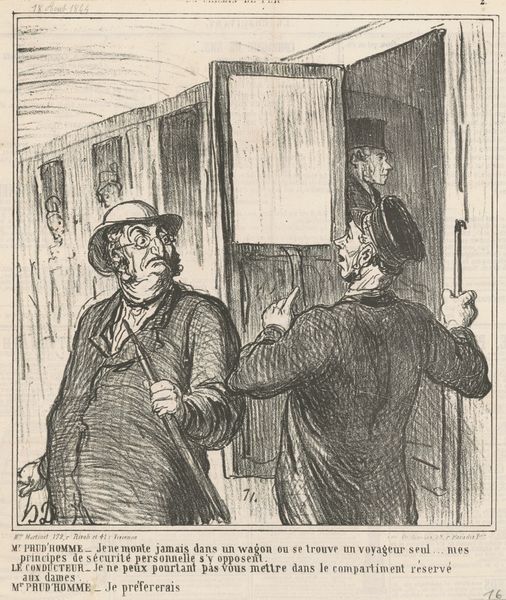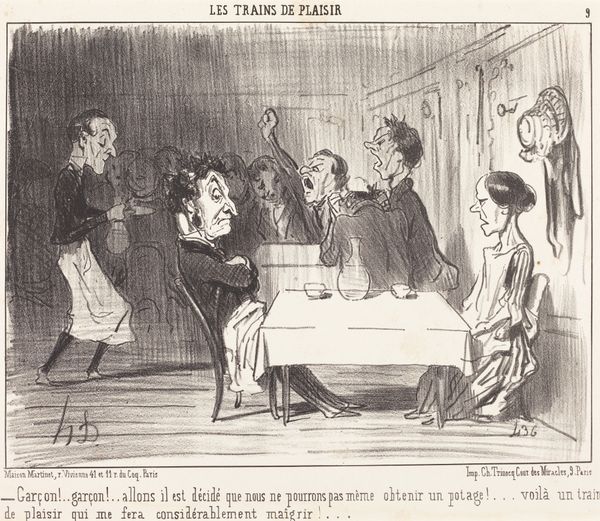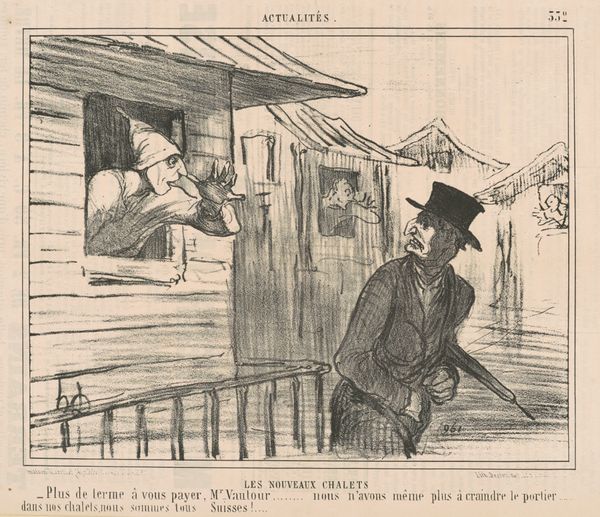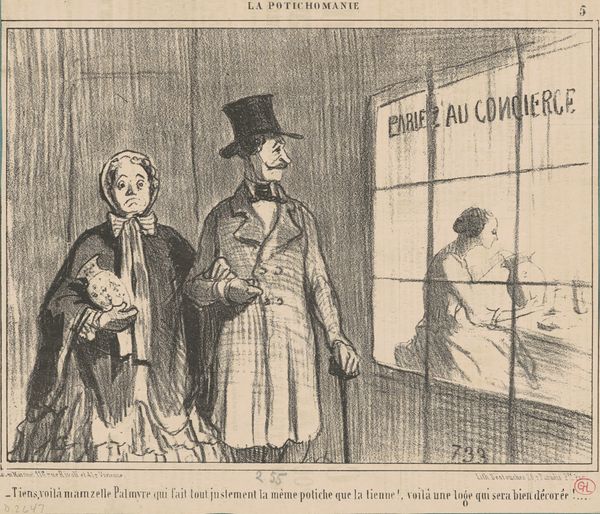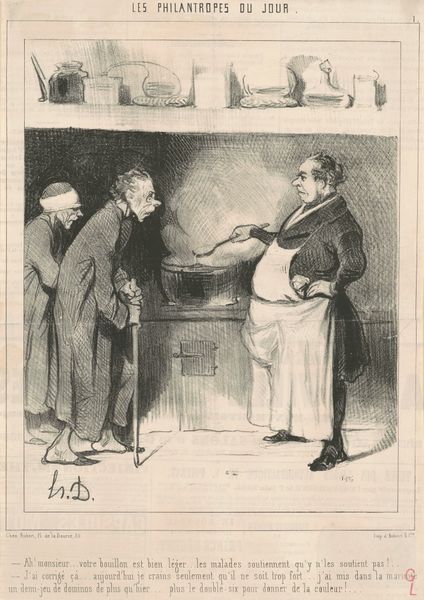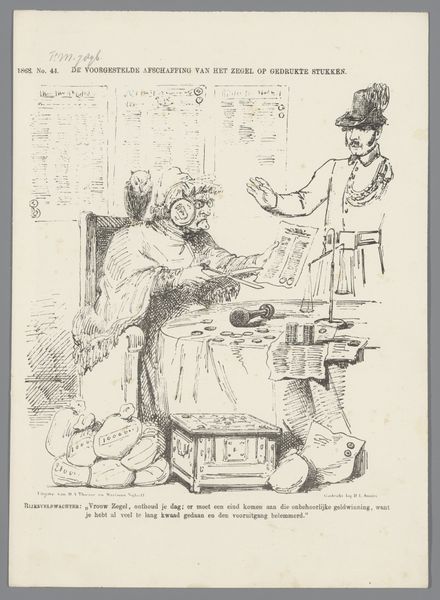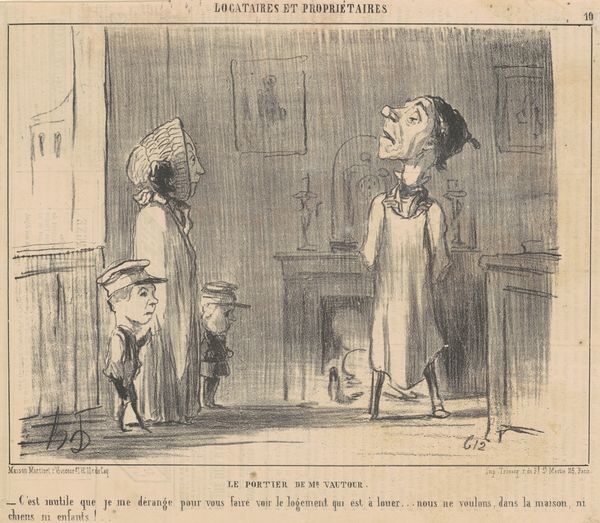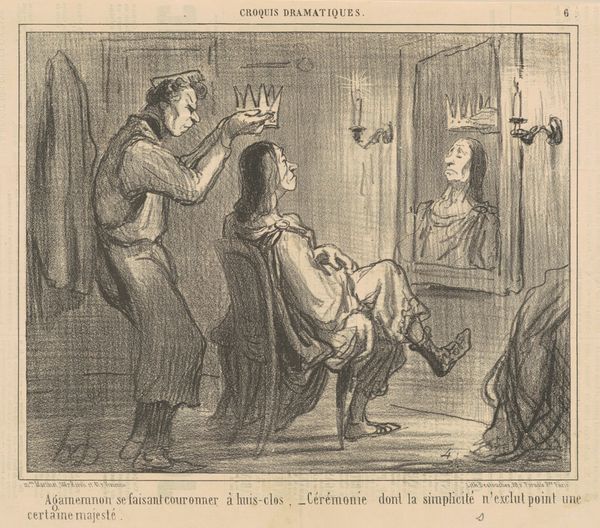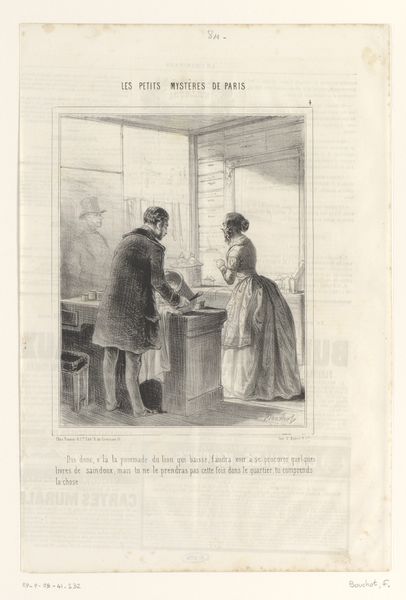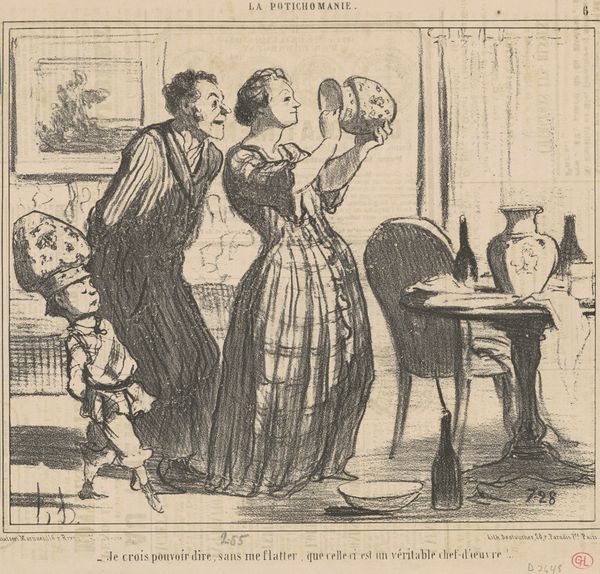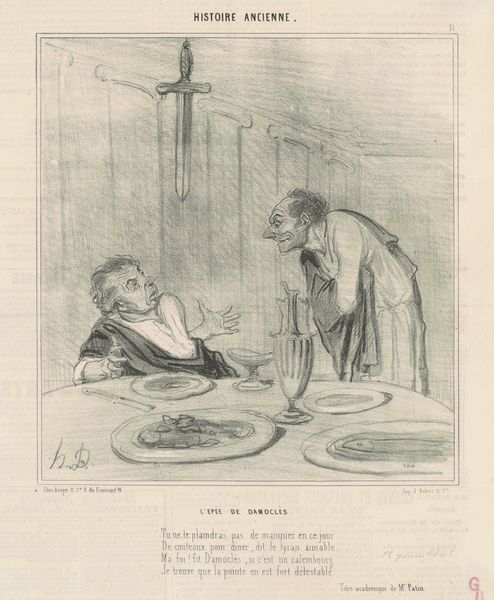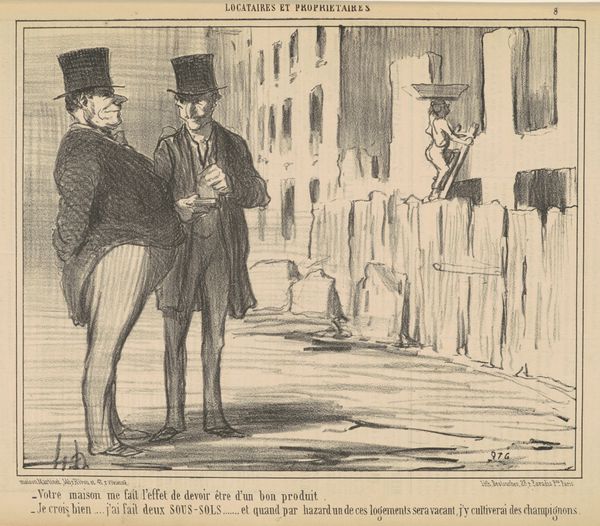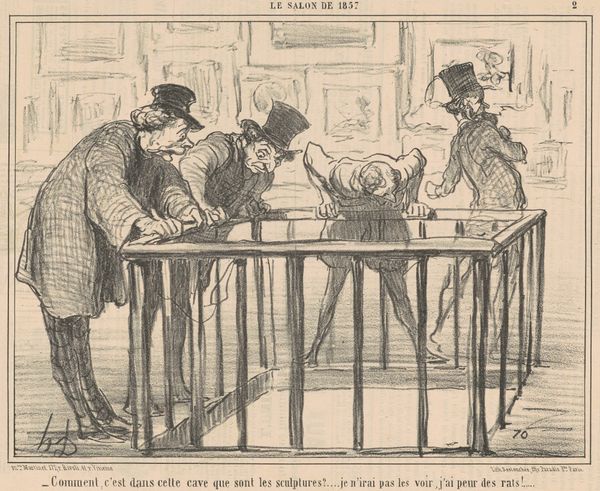
drawing, lithograph, print, graphite
#
drawing
#
lithograph
# print
#
caricature
#
romanticism
#
graphite
#
cityscape
#
genre-painting
Copyright: National Gallery of Art: CC0 1.0
Honoré Daumier made this lithograph, titled 'La tête de Méduse pour l'épicier fautif', meaning 'The Head of Medusa for the guilty grocer', in France, during the 19th century. It encapsulates Daumier's critical eye on the social structures of his time, particularly the perceived injustices perpetrated by those in positions of power. Daumier, working within a tradition of political caricature, uses visual codes to critique the grocer, who represents the bourgeoisie. The title itself, a reference to the mythical Medusa, suggests the grocer's actions are so reprehensible they turn people to stone. Note the reactions of the customers and the scales in the center of the image; they are not balanced, so the grocer is cheating the customer! Daumier's work frequently appeared in journals like 'Le Charivari', which served as platforms for social and political commentary. By examining the publications in which his images were disseminated, alongside the broader socio-political context of 19th-century France, we can better understand Daumier's role as a visual commentator and the public role of his art.
Comments
No comments
Be the first to comment and join the conversation on the ultimate creative platform.

